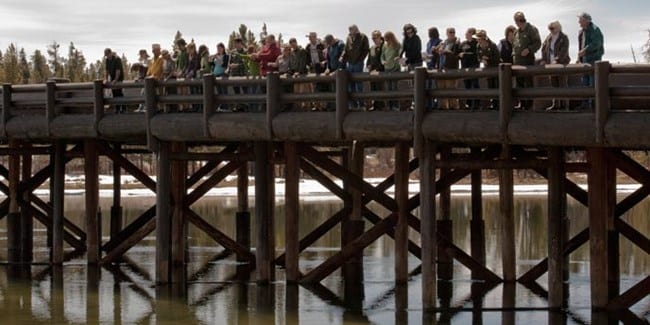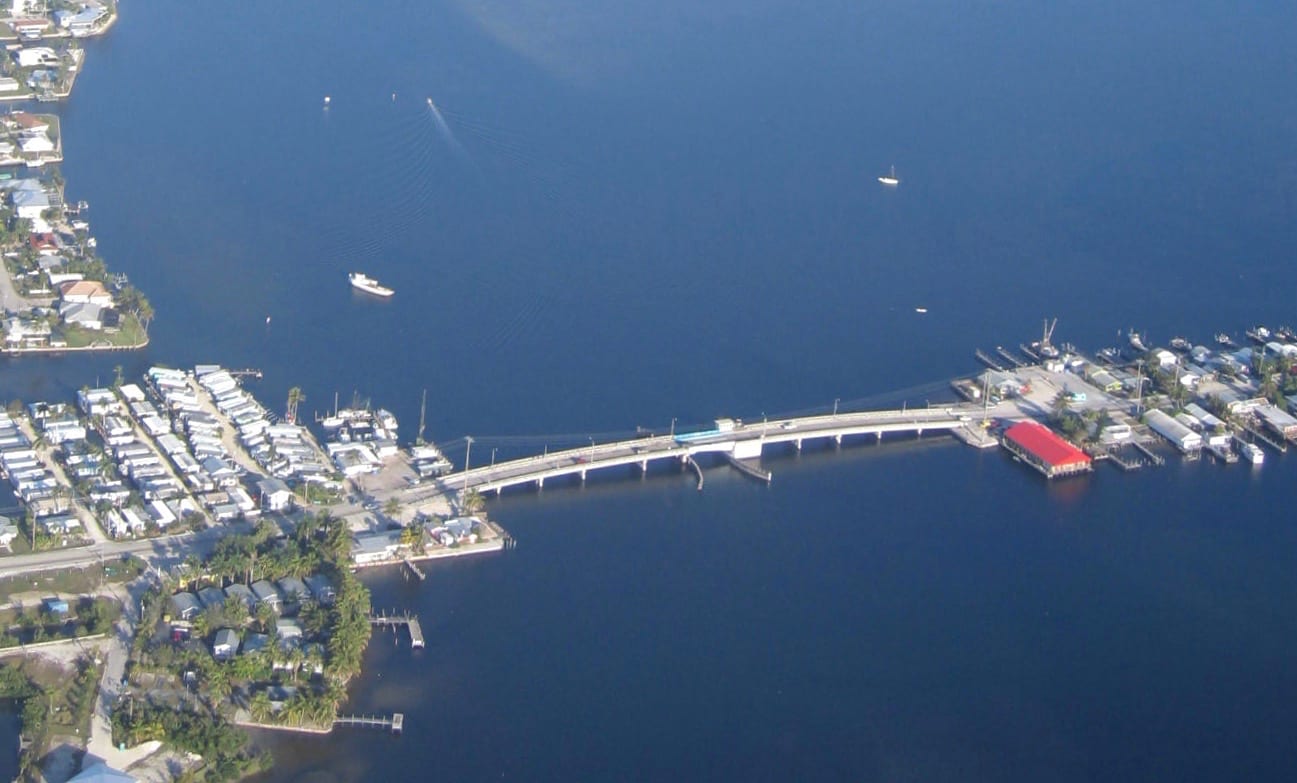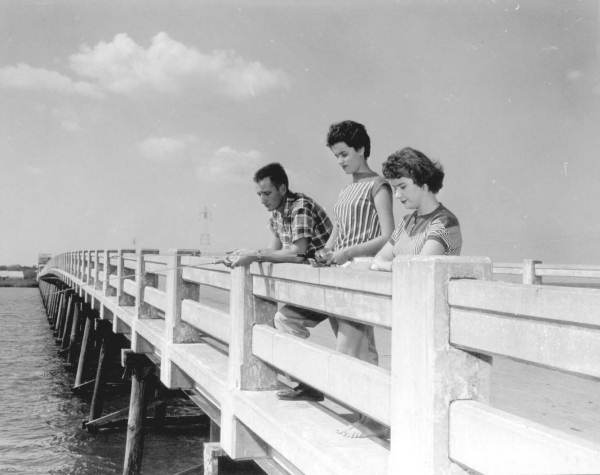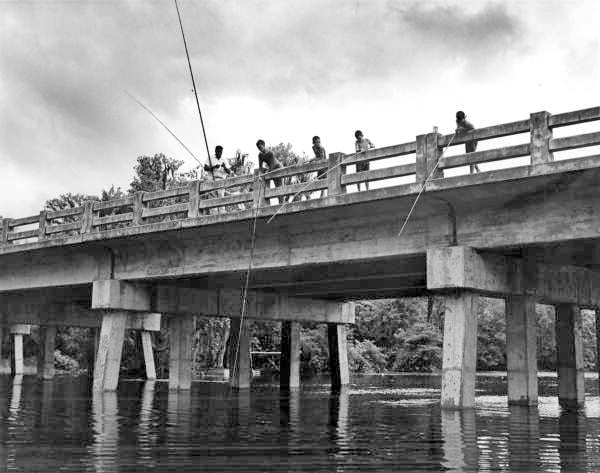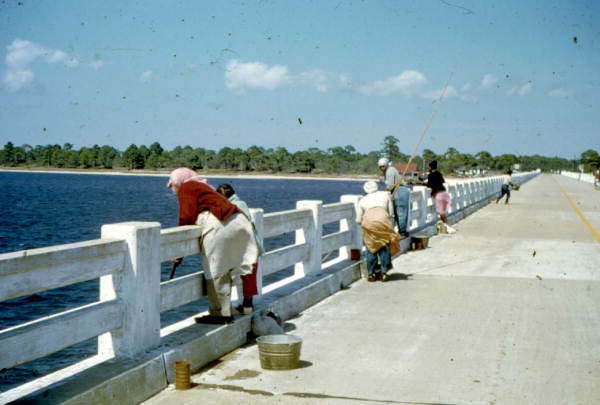Florida Waterways: “Fishing Bridges”
By Kevin McCarthy
CAPTIONS
Yellowstone National Park Fishing Bridge
Aerial view of old Matlacha Bridge in 2008
Fishing from the Causeway Bridge in Clearwater
Fishing from a bridge in Apalachicola
Fishing from a bridge over the Wakulla River
People fishing from a bridge in Panacea
Yellowstone National Park has an official “Fishing Bridge,” although – with the decline of the cutthroat trout population – the bridge is closed to fishing, but open for those who want to observe fish in the river below. The Fishing Bridge used to be very popular with fishermen, especially because cutthroat trout used to spawn in the waters there. However, because of the decline of the cutthroat population (in part, a result of this practice), the bridge was closed to fishing in 1973. Since that time, it has become a popular place to observe fish.
Closer to home here in Florida, Pine Island, near Cape Coral in South Florida, has what locals call “The fishingest bridge in the world,” and it does attract many anglers to the drawbridge there. Officially named the Matlacha Bridge (pronounced “Mat-La-Shay”), the small bridge carries County Road 78 over Matlacha Pass. The bridge is nine feet over the water, and fishermen have to be careful to watch for traffic going both ways.
Florida has lots of bridges, many of which provide really good fishing places for anglers. While we have to be careful on those bridges that carry vehicles, the truncated bridges which used to be connected spans across bodies of water, but which are now shortened, cut-off vestiges of what they used to look like offer great vantage spots to cast our lines. I’m thinking particularly of those fishing piers near our Sunshine Skyway Bridge south of St. Petersburg and the parts of Flagler’s Florida Overseas Railroad in the Florida Keys that stand next to the Florida East Coast Railway to Key West. Such fishing piers offer safety from passing traffic and great places to catch many different species of fish.
These bridges are so good at attracting fish because of the pylons and concrete foundations that offer hiding places and sources of food to many species of fish. A difficult part of such fishing is getting the hooked fish away from the structures below the surface of the water. Local fishing tackle stores can give good advice to newbies on what kind of tackle to use and how to take advantage of the tidal currents, different depths, and varying kinds of below-water structures at the bridges and causeways. Local fishing-tackle stores even rent rods to newcomers, as well as selling frozen and live bait.
You really need a moving current to bring in from deeper waters those fish looking for an easy meal. The game fish might utilize the structure to hide and conserve their energy before attacking a passing baitfish or crustacean. Some of the fishing piers span very deep channels that attract the larger game fish coming in from the ocean, for example near Florida Bay. The bridges that have been in place for several decades have pylons and fenders full of barnacles and oysters that attract fish like sheepshead and drum. So, enjoy another part of our amazing Florida waterways: new and old bridges with lots of fish down below just waiting to be caught.
Kevin McCarthy, the author of North Florida Waterways 2013 – (available at amazon.com), can be reached at ceyhankevin@gmail.com.

